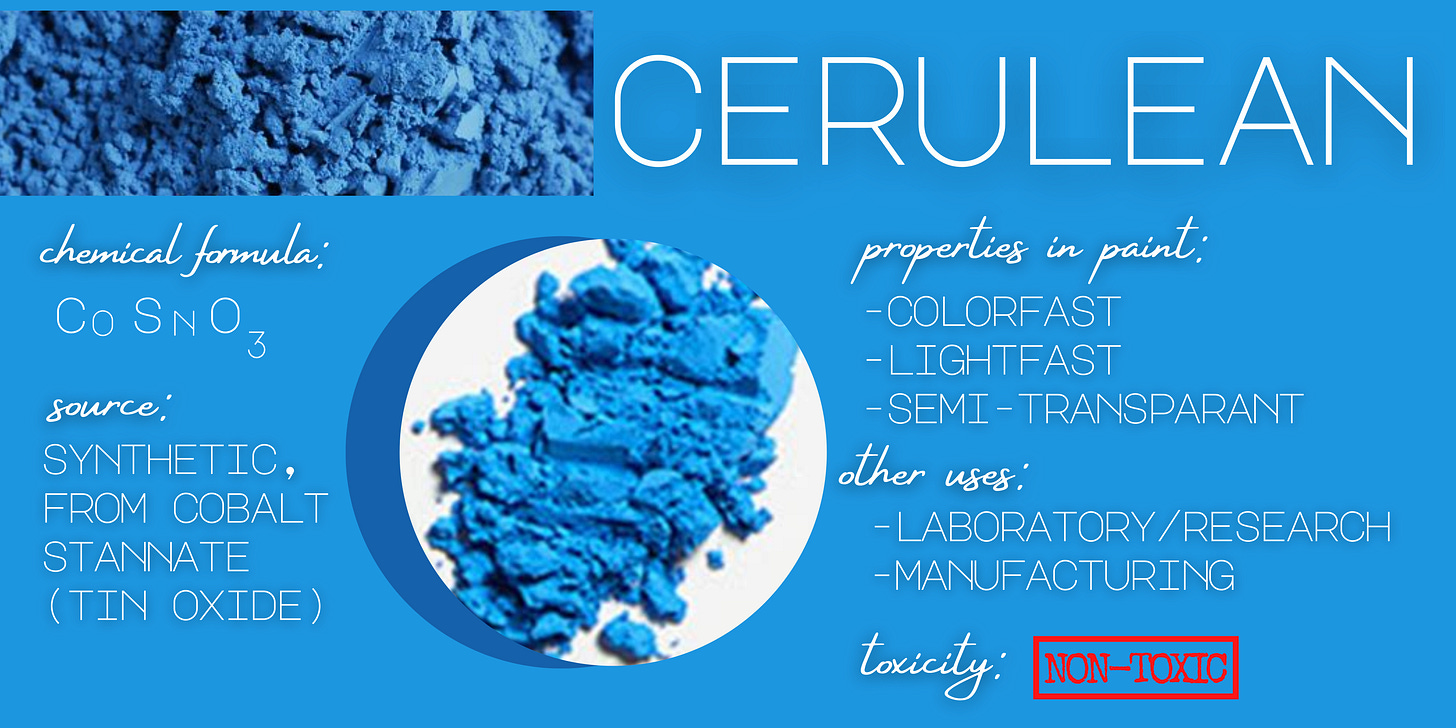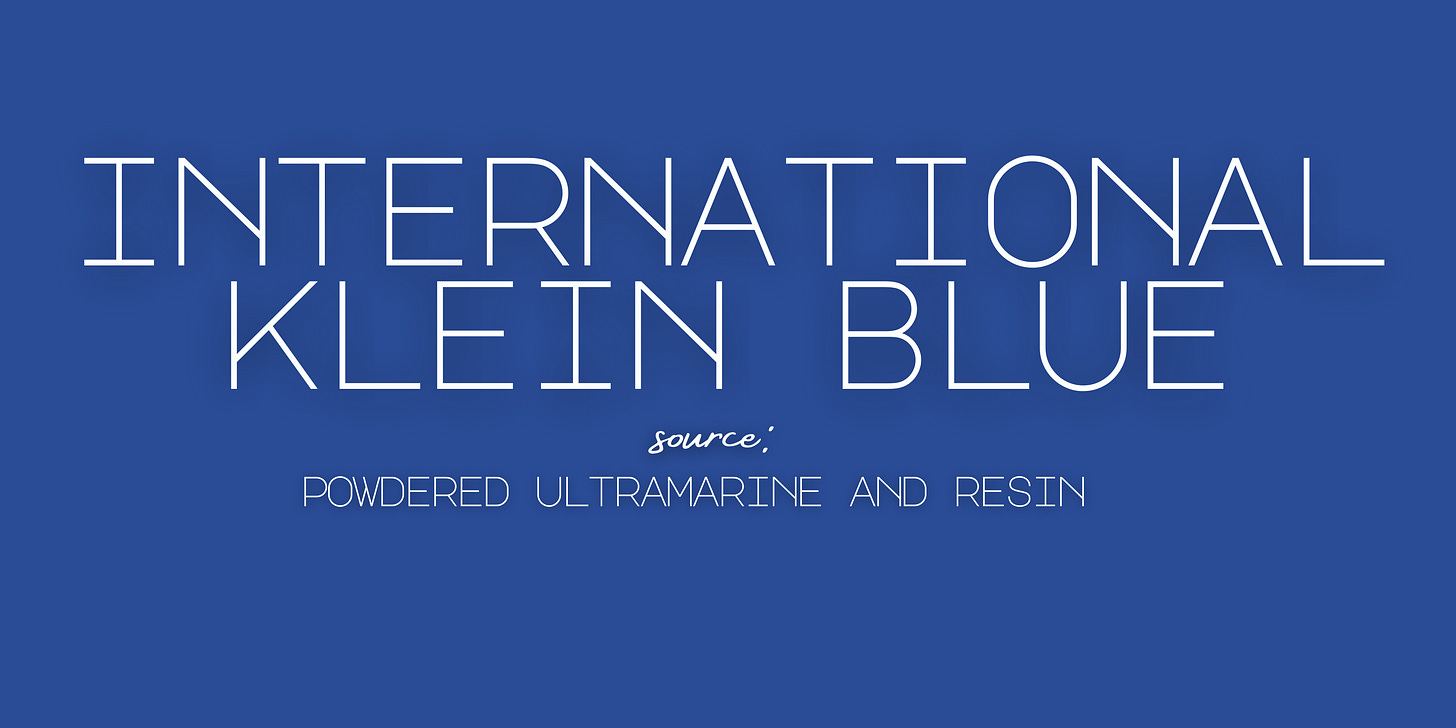Where Do We Get Color? Blue
Humans have come up with some pretty interesting, innovative, and even a few barbaric ways to create pigments. This is my sixth post in my series on pigment origins.
Most blue pigments were particularly expensive, and were consequently symbolic of royalty and divinity, from the ancient Egyptians, to Byzantine and Renaissance religious art. Due to its association with paintings of the Virgin Mary, blue became symbolic of trustworthiness ("true blue") and tranquility.
During the 18th century, blue began to be associated by the Impressionists with sorrow, melancholy, depression, and poverty. You've felt this influence if you've ever used the phrase "feeling blue." This was possibly from blue's association with bruising, according to some etymologists (students of word origins.) In this case, the association came first and was then applied to paintings.
Ultramarine
Ultramarine translates to "beyond the sea." It's a rich blue color that comes from lapis lazuli (translates to "blue stone") which was mined in what is now current day Afghanistan. During the medieval period, it was worth more than its weight in gold, due to its rareness and the labor intensive process used to turn the stone into paint. It was often used in religious paintings for the robes of the Virgin Mary, because the Catholic church held her as highly venerated. In the Last Supper, Leonardo DaVinci used ultramarine when painting Christ's robes, however, he used a cheaper pigment for Judas's blue clothing, called azurite.
Azurite
This pigment was formed from minerals found in Germany, France, and Italy. It was more affordable, although not as vivid, as ultramarine. Azurite turns green or black with heat and time, which means many paintings that used it now look different than when they were first painted. The word "azure" is an English version of the Persian word for "blue."
Cobalt Blue
The search for a less expensive blue continued, and in 1802, French chemist Louis Jacques Thénard invented a synthetic pigment, cobalt blue, to replace ultramarine. Thénard looked to a glaze used by potters, which used salts containing the element cobalt, and experimented with cobalt and alumina to make this new, less expensive blue. This color is occasionally called Parrish blue.
Cerulean
"Cerulean" is a beautiful word that simply rolls off the tongue, and it comes from the Latin for sky, or heaven. The color it represents is also beautiful: a calming blue that is, naturally, used for painting the sky, among other things. Cerulean blue was discovered in 1805, three years after cobalt blue was invented, but didn't become commercially available until 1860.
Prussian Blue
Prussian blue is a synthetic pigment that was discovered on accident. Dyemaker Johann Jacob Diesbach was working on-- you won't believe it-- a new red dye. One of his ingredients became contaminated with blood (animal blood) however, the dye underwent a chemical reaction and became a very commonly used blue. This is the blue that Picasso used during his blue period. This blue is also the blue used in making architectural blueprints.
International Klein Blue
The IKB... this was a color "invented" and patented by the esoteric artist Yves Klein, who then went on to paint it on canvases, found objects, and people. He made it with powdered ultramarine and resin and considered it to be the best blue. He believed one could achieve transcendentalist "freedom" through painting and certain colors. Many of his works were monochrome with his trademark blue.
YInMn
This is the most recent blue to date, discovered in 2009 by a professor and student at Oregon State University as the side result of a electronics-focused science experiment. The name comes from the elements --yttrium, indium, and manganese-- that make up the pigment. In addition to being used by artists from Oregon and elsewhere, it also has cooling properties and will likely be used commercially in the future.
That's all for this week! Thank you for sticking with me, whether you're tranquil or melancholy or anywhere on the spectrum. I'll be back next week with another post, but I'll leave you with one of my favorite questions: what's the saddest song you've ever heard?
sources
https://leonardodavinci.stanford.edu/submissions/foodog82/paint/paintcomp.html
https://geology.com/minerals/azurite.shtml
https://www.smithsonianmag.com/smithsonian-institution/the-origin-of-blue-jeans-89612175/
https://www.etymonline.com/word/blue-collar
https://www.americanelements.com/cobalt-ii-stannate-1345-19-3
https://colorcodes.io/blue/
https://www.pantone.com/articles
https://mymodernmet.com/shades-of-blue-color-history/
https://www.invaluable.com/artist/klein-yves-d8ifahzc4s/
https://chemistry.oregonstate.edu/chemistry-news-events/yinmn-blue










